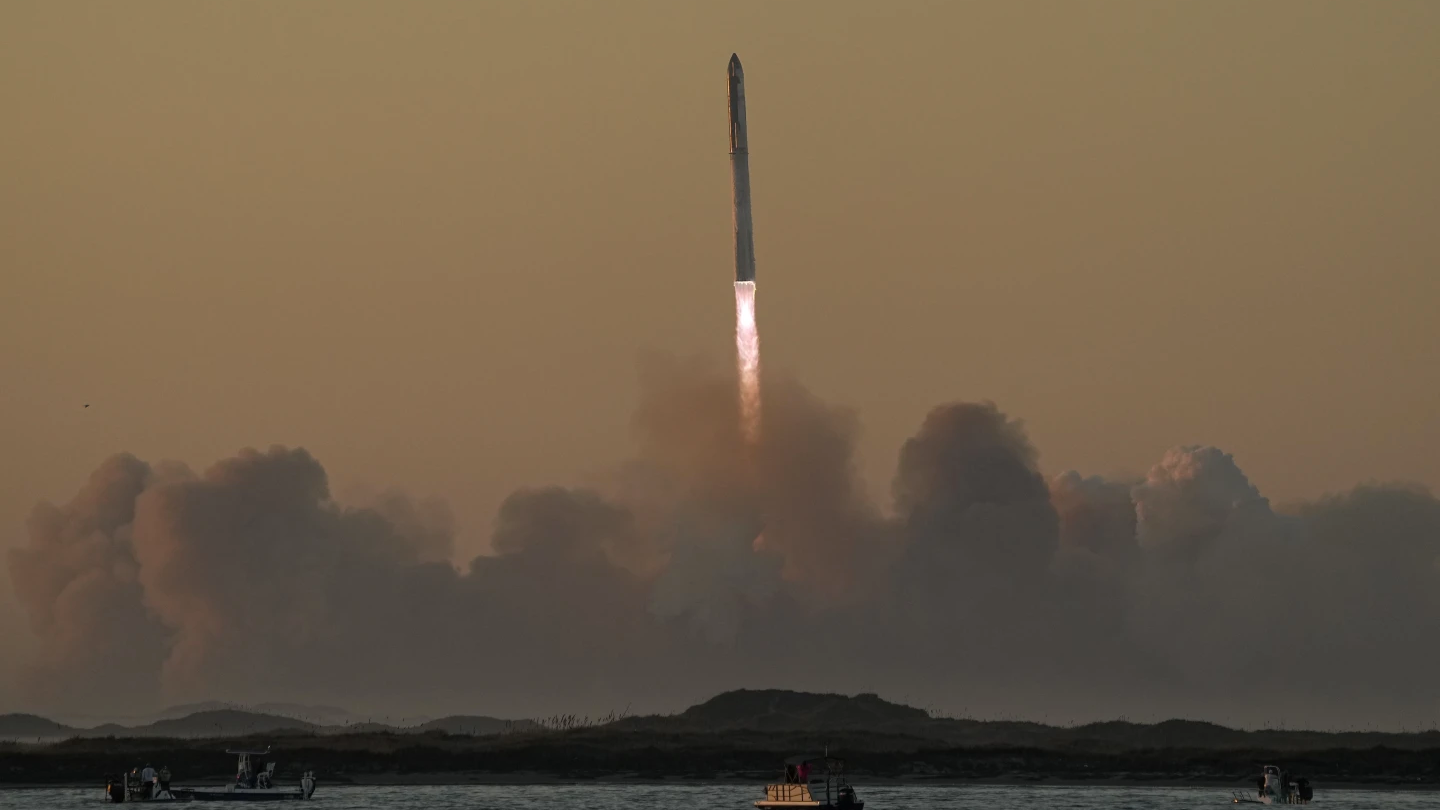
SpaceX's mega rocket Starship blasted off from Starbase in Boca Chica, Texas, November 18, 2023. /AP
SpaceX's mega rocket Starship blasted off from Starbase in Boca Chica, Texas, November 18, 2023. /AP
SpaceX's second test flight of its Starship rocket went further than its first one seven months ago but ended in a pair of explosions on Saturday.
Although it did not go as planned, the test flight performed a brand new launch method called "hot-staging," where Starship's engines broke away from the booster with the ignition.
The 121-meter Starship rocket, which includes a Starship spacecraft and Super Heavy rocket as booster, blasted off from Starbase in Boca Chica, Texas, but communication was lost shortly after the separation point, first with the booster, then the spacecraft.
The company said on X (formerly Twitter) that "the booster experienced a rapid unscheduled disassembly."

A screenshot of SpaceX's post about the Starship explosion on November 18, 2023. /@SpaceX
A screenshot of SpaceX's post about the Starship explosion on November 18, 2023. /@SpaceX
The second test launch was designed to reach an altitude of 240 kilometers, just high enough to send the bullet-shaped spacecraft around the globe before ditching into the Pacific near Hawaii.
Starship is the biggest and most powerful rocket ever built. Its first flight in April lasted four minutes, with the wreckage crashing into the gulf. Since then, Elon Musk's company has made dozens of improvements to the booster, its 33 engines and also the launch pad.
(With input from AP)



